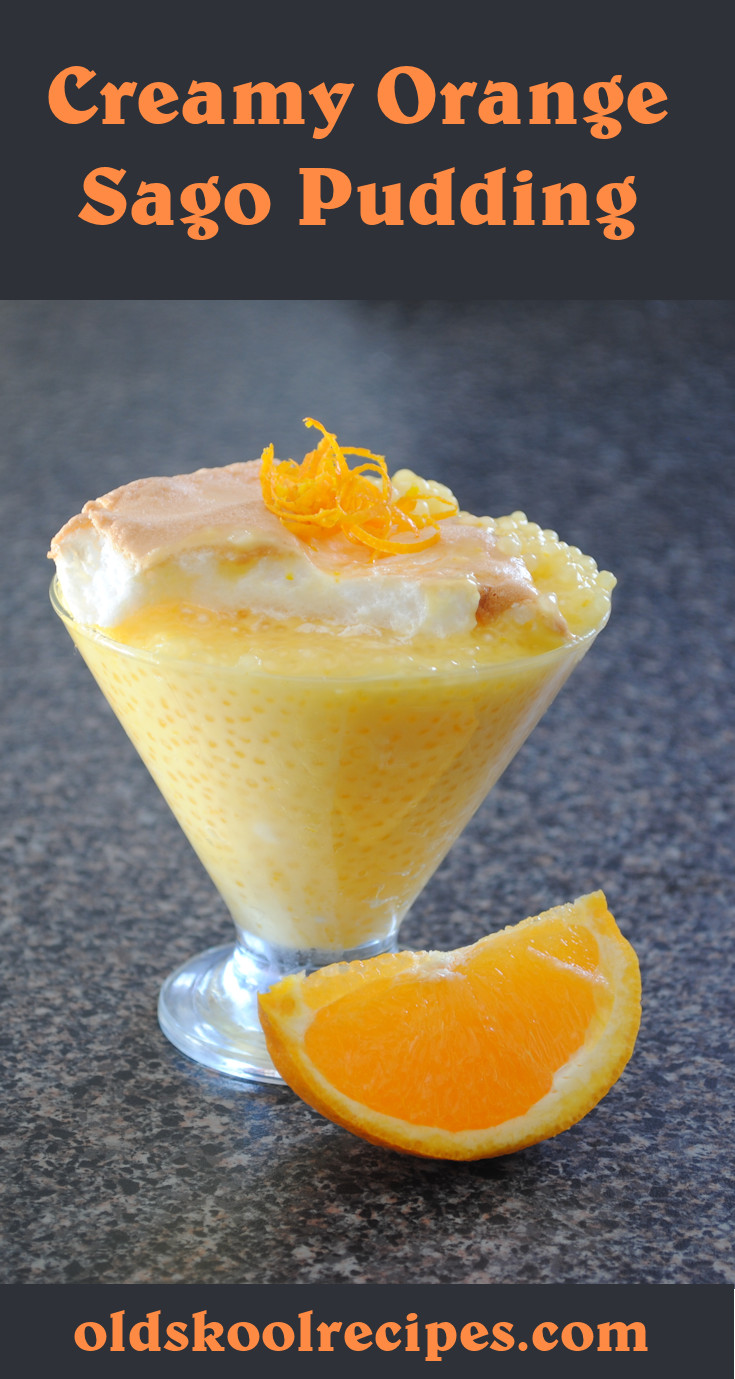
Creamy Orange Sago Pudding
A silky smooth sago pudding enriched with cream and fresh orange, topped with a golden meringue for a truly comforting dessert.
Video
Ingredients
Sago
1 Cup Sago
1 Cup Cream
1.5 Cups Milk
0.5 Cup Orange Juice
0.5 Cup Sugar
1 Pinch Salt
2 Teaspoons Orange Zest
2 Tablespoons Butter
2 Egg Yolks (Beaten)
Meringue
2 Egg Whites
3 Tablespoons Castor Sugar
Instructions
- Sago Mixture – Rinse 1 cup sago to remove excess starch, drain and transfer to a saucepan.
- Add 0.5 cup orange juice, 1.5 cups milk and 1 cup cream to the saucepan.
- Cook over low heat until the sago turns transparent, then remove from the heat.
- Stir in 2 teaspoons orange zest, 0.5 cup sugar, 1 pinch salt and 2 tablespoons butter until the butter has melted.
- Add 2 beaten egg yolks and mix well.
- Lightly grease an ovenproof dish (about 20 cm diameter x 10 cm deep) and pour in the sago mixture.
- Meringue – Beat 2 egg whites until soft peaks form, gradually adding 3 tablespoons castor sugar while mixing.
- Spoon the meringue evenly over the sago mixture, spreading to cover the surface completely.
- Bake on the lowest oven shelf at 180°C for about 25 minutes, until the sago is set and the meringue is golden brown.
- Serve hot, garnished with orange zest or crumbled honeycomb.
Hints & Tips
- Chill for a twist – This pudding is also delicious cold, perfect for a summer dessert.
- Extra citrus boost – Add a little extra orange zest for a stronger fruity aroma.
- Prevent graininess – Stir gently and cook the sago slowly to keep the texture silky.
Pin Me

Gallery
Made this recipe? Add your photo below:







